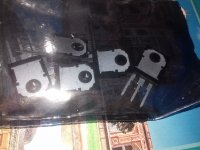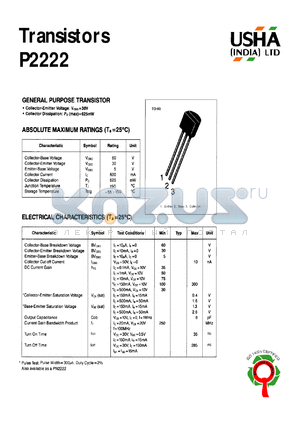You have to be very careful for MOSFETs also due to parasitic oscillations! Laterals are more forgiving than Verticals. Good layout is very important while designing a FET amplifier.Thats why MOSFET are preferred as it do not suffer from secondary breakdown and drive is simple and very straight forward.
Niru - your friend was lucky. The exception rather than the rule. On +/-30 to 35 V, they are actually hard to destroy. Used in a lot of lower power car amps on those voltages. And those get bridged into 4 ohms. If the +/-50 supply is loosey-goosey enough and drops fast under load you may get away with it, the same as an HT receiver using one pair of C3281/A1302 operates at +/-70 volts. But even that has a way of going south eventually.
Katuar - Most Mosfets are horrible about SOA at high voltages too. The perception that they don’t suffer second breakdown is a myth and the published SOA on most is a flat out lie. Recently, they have begun doing real SOA testing and publishing real results, but many old data sheets have never been updated. The old IRF240 and all its derivatives are still pretty good for SOA (exceeding MJ15024 below its VDS rating), but does have a second breakdown effect. Most are NOT so good - with the TIP35 beating the snot out of them. Especially the modern generation of switching types. LATERALS have no second breakdown, so I suppose that’s where the myth comes from. Or was it an industry-wide cover up? You decide.
Katuar - Most Mosfets are horrible about SOA at high voltages too. The perception that they don’t suffer second breakdown is a myth and the published SOA on most is a flat out lie. Recently, they have begun doing real SOA testing and publishing real results, but many old data sheets have never been updated. The old IRF240 and all its derivatives are still pretty good for SOA (exceeding MJ15024 below its VDS rating), but does have a second breakdown effect. Most are NOT so good - with the TIP35 beating the snot out of them. Especially the modern generation of switching types. LATERALS have no second breakdown, so I suppose that’s where the myth comes from. Or was it an industry-wide cover up? You decide.
Mosfets simply REQUIRE gate stoppers. The better the layout, the smaller you can make them.You have to be very careful for MOSFETs also due to parasitic oscillations! Laterals are more forgiving than Verticals. Good layout is very important while designing a FET amplifier.
And you might have a mosfet amplifier inexplicably blow up, and blame it on oscillation because no other cause can be found. That pesky second breakdown COULD be to blame. Most of us who are aware of it found out building source followers and voltage regs for tube amps, with all the oscillation prevention techniques in place. They just don’t seem to like high voltages as well as claimed.
To everyone from India, please stay away from CDIL as they are the fraudest of the business houses, they have zero accountability, already burned my fingers in the past.
BEL-India is stable and very reliable, since they are in reality based on Motorola dices of 2N3055HV and 2N3773. Provided you are getting them from genuine source.
BEL-India is stable and very reliable, since they are in reality based on Motorola dices of 2N3055HV and 2N3773. Provided you are getting them from genuine source.
On +/-30 to 35 V, they are actually hard to destroy....
I know... even Mr.Elliott says the same!The perception that they don’t suffer second breakdown is a myth and the published SOA on most is a flat out lie.
I've always been fan of chipamps, because those are inexpensive, easy to build & provides excellent performance! Although i made couple of discrete amp using pre assembled kit but the truth is i'm still learning about discrete amp & yet to build one. Lol.
As per my understanding & experience i don't consider switching Fets for audio, only Laterals! But the problem is their availability, almost unobtainable here in india & expensive too! [ Though i have a plan ;-) ] On the other hand BJT's are very much available, rugged like a tank & gives outstanding performance!
Anyway, despite their classic appearance Metal can is now becoming obsolete. To-3 was popular in 80's due to lack of technology & because of their outstanding dissipation capabilities(less heatsinking, cost effective) but situation has changed. Today much better transistors are available. Plastic package like to-247/to-3P are easier to install and dissipate enough heat to get the job done, so they're becoming to-3's replacement.
Where are Usha transistors available?
Please post details.
My information is that the owners got involved in a failed steel project, and the entire group ended up in a financial mess, the factory is long closed.
Please post details.
My information is that the owners got involved in a failed steel project, and the entire group ended up in a financial mess, the factory is long closed.
That's true but only for high power to-3The problem is that the plastic package is not a 1 for 1 replacement. It’s more like 3 to 2.
& for repairing job.
Really?!My information is that the owners got involved in a failed steel project, and the entire group ended up in a financial mess, the factory is long closed.
https://m.usha.com/
No idea about USHA transistors.
Last edited:
Thanks.
Just sent an RFQ to Aeri for 500 transistors, they claim to have 9500 in stock.
Sadly USHA (semiconductors) looks defunct, Aeri itself classifies these as obsolete parts and their motto is "Obsolete and unavailable parts distributor".
That said, if they are NOS, fine with me.
Just sent an RFQ to Aeri for 500 transistors, they claim to have 9500 in stock.
Sadly USHA (semiconductors) looks defunct, Aeri itself classifies these as obsolete parts and their motto is "Obsolete and unavailable parts distributor".
That said, if they are NOS, fine with me.
Usha appliances (company name Usha (India) Ltd.), has merged Usha Rectifier with itself. The device company started in 1964.
They were last doing device packaging on contract for Samsung and Fairchild, but there are no submissions since 2005 with the Registrar of Companies, which is mandatory.
Usha (India) also seems to have two similar companies, one is Usha Rectifier Pvt. Ltd., set up in 2015, and Usha International.
They make and trade in ceiling fans, sewing machines, and so on, but their site does not mention the semiconductor business, which was merged with this business.
The private company, Usha Rectifier Pvt. Ltd., in turn owns a software business...and the owners are unrelated to the original promoters.
The Usha family was originally one of the owners of DCM, a giant of its day, family disputes and labor problems ended it.
And in the field also, it seems defunct for the electronics side..
JMF, they need to be checked, please do that before issuing as a good part.
And if genuine, try to corner some more, you love them!
They were last doing device packaging on contract for Samsung and Fairchild, but there are no submissions since 2005 with the Registrar of Companies, which is mandatory.
Usha (India) also seems to have two similar companies, one is Usha Rectifier Pvt. Ltd., set up in 2015, and Usha International.
They make and trade in ceiling fans, sewing machines, and so on, but their site does not mention the semiconductor business, which was merged with this business.
The private company, Usha Rectifier Pvt. Ltd., in turn owns a software business...and the owners are unrelated to the original promoters.
The Usha family was originally one of the owners of DCM, a giant of its day, family disputes and labor problems ended it.
And in the field also, it seems defunct for the electronics side..
JMF, they need to be checked, please do that before issuing as a good part.
And if genuine, try to corner some more, you love them!
Last edited:
All I got is:@JMFahey Hello Mr.Fahey, did you get any feedback from AERI? As an indian in my entire life i never heard about USHA transistors.
AERI Sales <brandon at aeri dot com>
dom., 30 de jan. 07:41 (há 5 dias)
para mim
Thank you for your request. A representative will contact you within 3 hours, during our U.S. business hours.
but no further contacts.
FWIW:

@wg_ski Yes 🙂 .... the price of Onsemi is little higher but i think ST is fine for the Job. I don't need more than 8watt into 8R from JLH. I'll use 4mm thick 0.5in wide alu bar to sandwich those TlPs with the heatsink
(200×100×40mm each). I believe i don't need to3 here. I'll use same transistors for PSU also.
@JMFahey Thnks. Here in india i never heard about USHA 3055. But many years ago you posted about this (you posted couple of pictures of TDK plant etc); Yes, i did read the thread; i remember

(200×100×40mm each). I believe i don't need to3 here. I'll use same transistors for PSU also.
@JMFahey Thnks. Here in india i never heard about USHA 3055. But many years ago you posted about this (you posted couple of pictures of TDK plant etc); Yes, i did read the thread; i remember


This corresponds to a power consumption of 40 watts, or up to 20 watts per transistor. From this you need to proceed when choosing a heatsink.8watt into 8R from JLH
Amplifiers like the JLH aren‘t really SOA-challenged as they are bulk heat challenged. Whether it’s reliable is more about what you can keep Tj down to. You could use TO-220’s if it wasn’t for the awful thermal choke point of that tiny package. Use TO-220’s with a 0.5C/W heat sink or TO-247’s with 0.8, or TO-3’s with 1 C/W. Its only aluminum, but you do have to pay for it. Lucky for us DIYs, we tend to buy heat sink material for our projects at less than normal market prices - using what scrap we can find.
The important thing to remember is that for a given heat sink temperature, the smaller the package the hotter the die runs. And EVERY failure mechanism is accelerated by temperature. That’s why there is/was such a big push in the pro audio industry to move in wholesale to grounded collector topologies. That mica insulator costs you temperature, even though the user is completely shielded from it.
The important thing to remember is that for a given heat sink temperature, the smaller the package the hotter the die runs. And EVERY failure mechanism is accelerated by temperature. That’s why there is/was such a big push in the pro audio industry to move in wholesale to grounded collector topologies. That mica insulator costs you temperature, even though the user is completely shielded from it.
- Home
- Amplifiers
- Solid State
- Manufacturing fault? CDIL 2N3055

